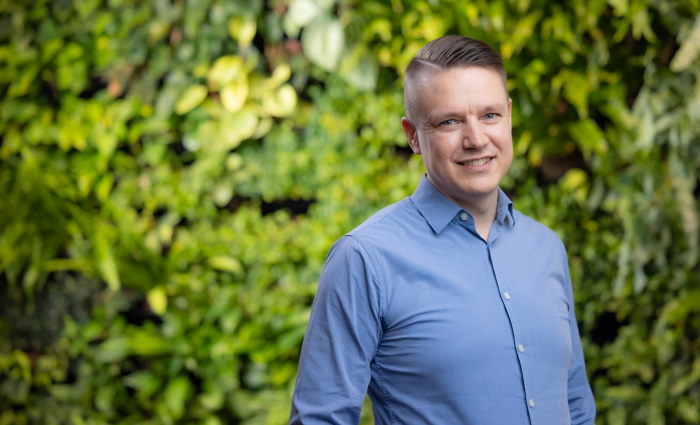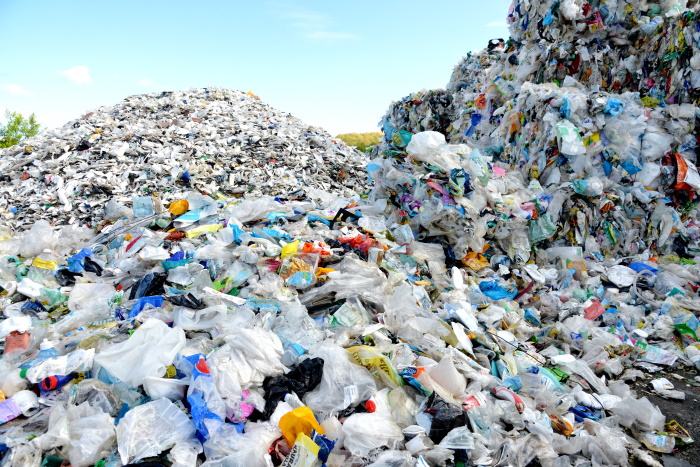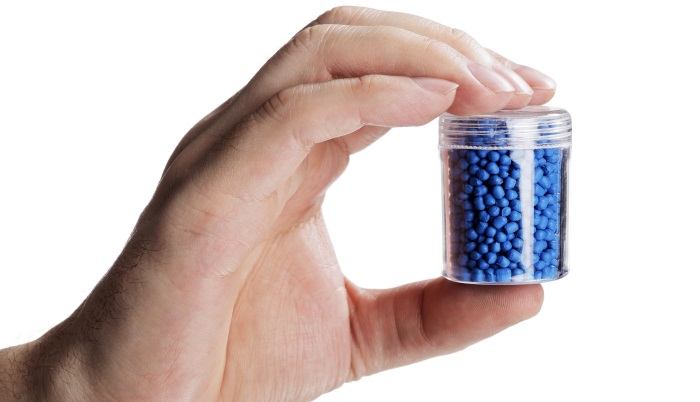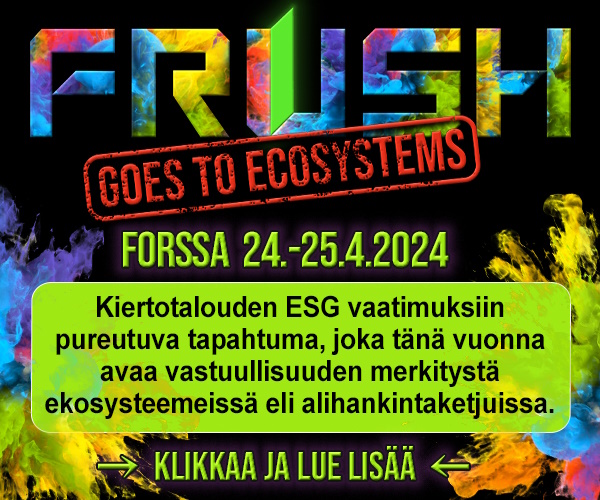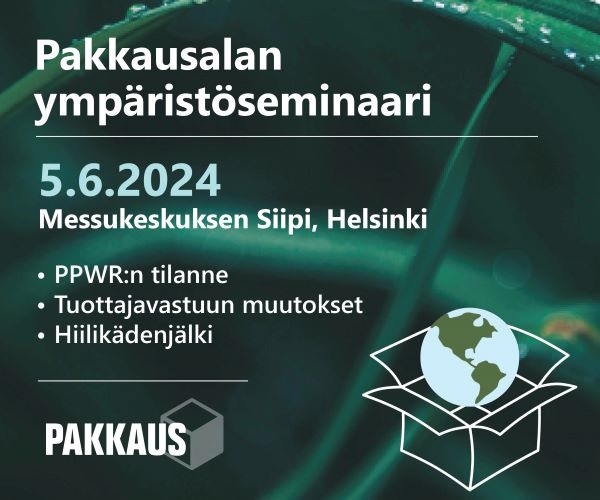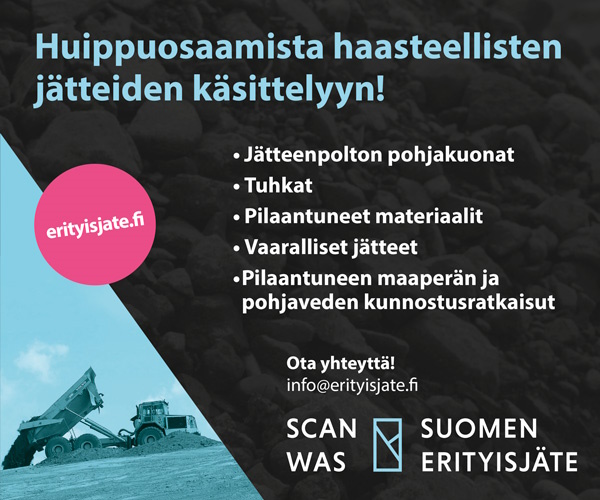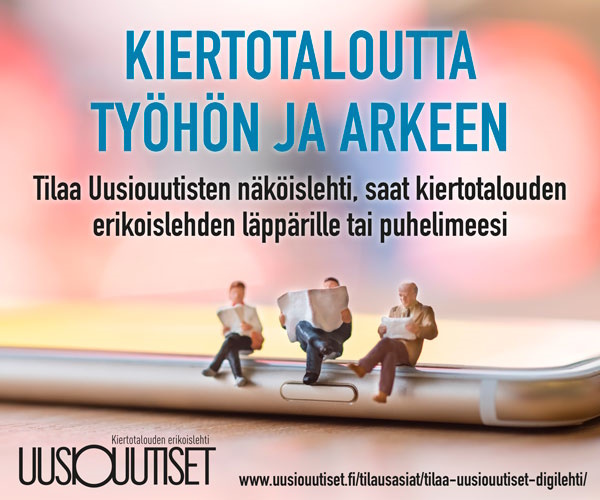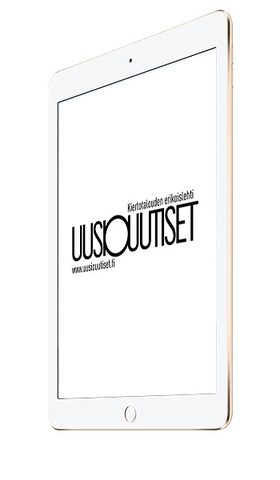Nykyiset toimintamallit eivät riittävästi edistä kiertotaloutta. Pullonkaulat ovat kuitenkin ratkaistavissa jo olemassa olevilla teknologioilla. Maailma on tällä hetkellä 8,6 %…
Kierrätys ketjun osaksi
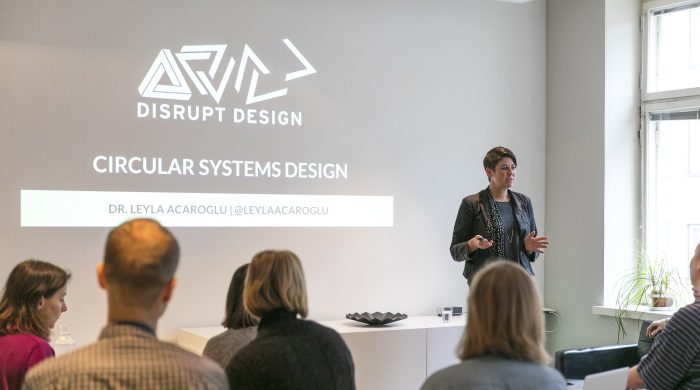
Kierrätys tekee jätteestä hyväksyttyä.
Näin sanoo kestävän suunnittelun asiantuntija Leyla Acaroglu Design Forum Finlandin tilaisuudessa Helsingissä salilliselle muotoilijoita ja muita toimijoita.
Kiertotalouden ja ecodesignin puolestapuhuja, tohtori ja YK:n hyväntahdonlähettiläs on sanonut näin ennenkin, esim Ellen MacArthur Foundationin seminaarissa. Hänen TED-puhettaan on katsottu yli miljoona kertaa. Mitä hän tarkoittaa? Eikö kierrätyksen nimenomaan pitäisi olla tärkeä osa sitä, että kiertotalous ylipäätään saadaan toimimaan?
”Kierrätys on tärkeää, mutta se on oltava osa systeemiä. Nyt se on tuotantojärjestelmän ulkopuolella”, Acaroglu selittää.
Acaroglun mukaan ympäristövaikutuksiltaan negatiivista toimintaa pitäisi verottaa sen sijaan, että nykyisin verotus kohdistuu vaikkapa työn tekemiseen tai arvonlisään. Tästä Acaroglu puhui esimerkiksi Montrealissa YK:n biodiversiteettisopimuksen kokouksessa joulukuussa.
”On tieteellistä näyttöä, että status quo ei toimi. Sitä on siis muutettava.”
Suunnittelija vallan kahvassa
Hän on perustanut Disruptive Designin ja opettaa systeemistä muutosta (Disruptive Design Method, DDM), jossa kolme vaihetta: louhinta, kartoitus ja rakentaminen. Ensin siis louhitaan ongelmaa, katsotaan sitä joka suunnasta, tunnistetaan pienetkin siihen vaikuttavat tai liittyvät tekijät. Sitten nämä tekijät järjestellään esimerkiksi syys-seuraus-suhteet paljastavaksi kartaksi. Näin paljastuu rakenne, jota voi sitten lähteä purkamaan ja muuttamaan.
Acaroglu korostaa, että ajattelun on oltava kolmiulotteista, jotta syntyisi laajempi ymmärrys eri järjestelmien (sosiaalisten, teollisten ja luonnollisten) interaktiosuhteista. On liikuttava mikro- ja makrotasolla.
Suunnittelijat ovat Acaroglun mukaan avainasemassa:
”Suunnittelijoilla on valta muuttaa elämäämme. Suunnittelija panee koko tuotantoketjun liikenteeseen tiettyyn suuntaan.”
Acaroglu teki väitöskirjansa ekologisesta tuotesuunnittelusta 19-vuotiaana. Ecodesgnin hän näkee laajasti: se on ymmärrystä piilotetuista ympäristövaikutuksista, joita valinnoilla on.
Työkaluja ja tietoa ekologisempaan suunnitteluun on, mutta yritykset eivät ole ottaneet niitä kovin ahkerasti käyttöön. Hän näkisi mieluusti suurten yritysten laittavan rahaa elinkaariosaajiin ja vaikutustenarviointiin, ei pelkästään markkinointiin.
”Yrityksillä on pelkoa olla pioneeri”, Acaroglu sanoo ja juoksee ovesta. Hän on lähdössä lounaalle suomalaisten kansanedustajien kanssa. Maailman muuttaminen on vielä kesken.
Making recycling part of the system
Recycled materials do not reduce or replace the production of virgin materials. On the contrary, they increase net consumption.
Recycling validates waste.
These comments are by Sustainable Design expert Leyla Acaroglu at Design Forum Finland in Helsinki to a room full of designers and other professionals. The spokesperson for the circular economy and ecodesign, the doctor and the UN Ambassador has said this before, for example, at the Ellen MacArthur Foundation seminar. Her TED speech has been viewed over a million times. What does she mean? Isn’t recycling an important part of the circular economy?
“Recycling is important, but it must be part of the system. Now it’s externalised,” explains Acaroglu.
Nowadays, recycled materials do not reduce or replace the production of virgin materials.
Our current production system does not take into account the resources that drop out of the system, such as waste. It has no value. According to Acaroglu, these externalised resources should be recaptured within the system.
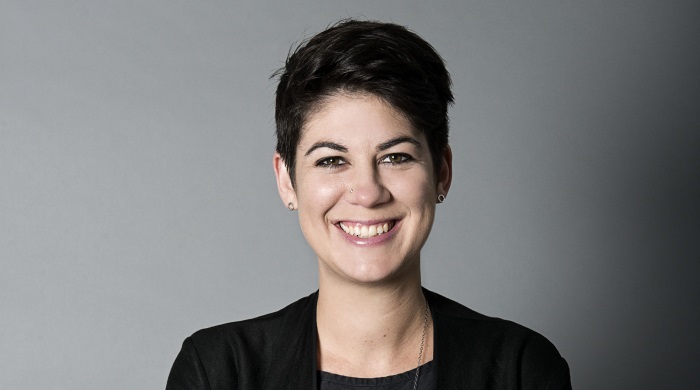
According to Acaroglu, activities with a negative environmental impact should be taxed instead of taxing work or added value. Acaroglu spoke about this at the UN Convention on Biological Diversity in Montreal in December.
“There is scientific evidence that the status quo does not work. Therefore, it must be changed.”
Acaroglu likes to talk about challenging the status quo and changing the world. In Helsinki, she reminded her audience that modern systems were created when there were significantly fewer people. It is not enough that we try to modify this or that, innovate a little bit, because as Einstein said, we cannot solve problems with the same mindset that gave birth to them. We need big changes.
Designers with power
Acaroglu calls herself a problem lover, as every problem holds the keys to its solution. She has set up the Disrupt Design agency and teaches a Disruptive Design Method (DDM). The method consists of three stages: mining, mapping and construction.
First, the problem is analysed and looked at from every point of view, identifying even the smallest factors affecting or related to it. Then, these factors are arranged into a map that illustrates, for example, cause and effect relationships. This will reveal the hidden structure that can then be changed.
Acaroglu emphasises that thinking must be three-dimensional in order to gain a broader understanding of the interaction between different systems (social, industrial and natural). It has to move on the micro and macro levels.
According to Acaroglu, designers have a key role to play:
“Designers have the power to change our lives. It is the designer who puts the entire production chain in motion in a certain direction.”
Acaroglu has been interested in ecological product design since the age of 19. She has obtained her PhD on this topic. Her approach to ecodesign is broad: it is an understanding of the hidden environmental impacts that our choices have. Acaroglu uses the refrigerator as an example. The design has not changed since the 1950s: a cold cabinet with boxes. Only the size has grown bigger.
“The purpose of the refrigerator is to keep the food edible. Instead, it only adds to food waste: it’s becoming easier to forget food behind the shelves and it spoils.”
There are tools and information for a more ecological design available, but companies are not using them as extensively as Acaroglu would have hoped. She would gladly see large companies investing money into life cycle analysis expertise and impact assessment, not just marketing.
“Businesses have a fear of being a pioneer,” Acaroglu says and runs out the door. She is leaving for lunch with Finnish MPs. There is still some changing of the world left to do.
Kuvat/ Photos: Kalle Kataila/Design Forum Finland, Nathalie Théry.


